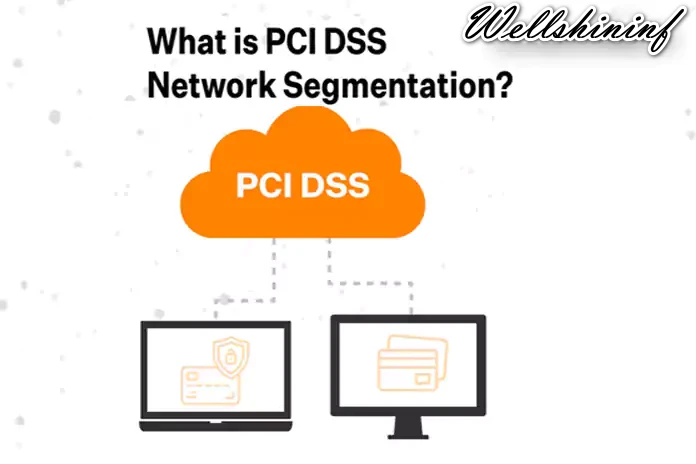Boosting Data Security with Network Segmentation PCI DSS Compliance

In an era where data breaches are becoming increasingly common, the need for robust data security measures is paramount. One highly effective strategy is network segmentation, which plays a crucial role in achieving Payment Card Industry Data Security Standard (PCI DSS) compliance. In this comprehensive guide, we’ll explore the concept of network segmentation and how it enhances data security while ensuring PCI DSS compliance.
Table of Contents
- Introduction
- Understanding Network Segmentation
- What is Network Segmentation?
- Benefits of Network Segmentation
- The Importance of PCI DSS Compliance
- How Network Segmentation Enhances Data Security
- Reducing Attack Surface
- Isolating Sensitive Data
- Minimizing Lateral Movement
- Implementing Network Segmentation
- Assess Your Network
- Define Segmentation Policies
- Choose the Right Tools
- Challenges and Best Practices
- Overcoming Challenges
- Best Practices for Effective Network Segmentation
- PCI DSS Requirements
- Key PCI DSS Requirements
- Aligning with Network Segmentation
- Benefits Beyond Compliance
- Improved Operational Efficiency
- Scalability and Adaptability
- Real-World Examples
- Success Stories of Companies Implementing Network Segmentation
- Training and Awareness
- Educating Your Team
- Fostering a Security-Centric Culture
- Network Segmentation vs. Traditional Security Measures
- A Comparative Analysis
- Common Mistakes to Avoid
- Pitfalls to Steer Clear Of
- Future Trends in Data Security
- The Evolving Landscape
- Conclusion
- Frequently Asked Questions (FAQs)
Introduction
In today’s digital age, safeguarding sensitive data is paramount. Network segmentation, in conjunction with PCI DSS compliance, offers a robust approach to fortify your data security. This article will take you on a journey through the world of network segmentation, PCI DSS compliance, and how these two elements can revolutionize your data security strategy.
Understanding Network Segmentation
What is Network Segmentation?
Network segmentation involves dividing a network into smaller, isolated segments. These segments are created based on factors like user roles, departments, or device types. By segregating your network, you effectively reduce the attack surface and limit the impact of a breach.
Benefits of Network Segmentation
Network segmentation brings an array of benefits, including improved security, network performance, and simplified management. It’s an essential strategy for organizations aiming to bolster their data security.
The Importance of PCI DSS Compliance
PCI DSS is a set of security standards designed to ensure that all companies processing, storing, or transmitting credit card information maintain a secure environment. Complying with PCI DSS is vital for businesses that handle payment card data.
Read More: Link on this link Achieving a competitive edge in the insurance sector via digital channels
How Network Segmentation Enhances Data Security
Reducing Attack Surface
Network segmentation drastically reduces the attack surface, making it harder for cybercriminals to exploit vulnerabilities. It acts as a robust first line of defense.
Isolating Sensitive Data
Sensitive data, like credit card information, can be isolated in specific network segments. This ensures that even in the event of a breach, the most critical data remains protected.
Minimizing Lateral Movement
Network segmentation hinders lateral movement within your network. Once a breach occurs, it’s challenging for an attacker to move freely within the segmented network.
Implementing Network Segmentation
Assess Your Network
Before implementing network segmentation, conduct a thorough assessment of your network to identify vulnerabilities and areas that need protection.
Define Segmentation Policies
Clearly define your segmentation policies. Determine who should access what and under what circumstances.
Choose the Right Tools
Select the appropriate tools and technologies to implement network segmentation effectively. This may include firewalls, VLANs, or SDN solutions.
Challenges and Best Practices
Overcoming Challenges
Network segmentation is not without its challenges, such as complexity and compatibility issues. We’ll explore how to overcome these obstacles.
Best Practices for Effective Network Segmentation
Discover the best practices that can ensure your network segmentation strategy is successful and robust.
PCI DSS Requirements
Key PCI DSS Requirements
Understand the essential requirements of PCI DSS, which serve as a guideline for securing payment card data.
Aligning with Network Segmentation
Learn how network segmentation complements PCI DSS requirements, helping you achieve compliance seamlessly.
Benefits Beyond Compliance
Improved Operational Efficiency
Enhance your organization’s operational efficiency by implementing network segmentation and reaping the benefits of a more organized network.
Scalability and Adaptability
Network segmentation not only improves security but also makes your network more adaptable and scalable to future needs.
Real-World Examples
Success Stories of Companies Implementing Network Segmentation
Explore real-world examples of organizations that have successfully implemented network segmentation, highlighting the positive outcomes.
Training and Awareness
Educating Your Team
Training and awareness play a crucial role in the success of network segmentation. Ensure your team is well-prepared for this security strategy.
Fostering a Security-Centric Culture
Create a culture of security awareness within your organization to further enhance data protection.
Network Segmentation vs. Traditional Security Measures
A Comparative Analysis
Compare network segmentation with traditional security measures to understand the advantages it offers.
Common Mistakes to Avoid
Pitfalls to Steer Clear Of
Be aware of common mistakes that organizations make when implementing network segmentation to avoid potential pitfalls.
Future Trends in Data Security
The Evolving Landscape
Stay ahead of the curve by exploring the future trends in data security and how network segmentation fits into the evolving landscape.
Conclusion
Network segmentation, when coupled with PCI DSS compliance, is a game-changer in data security. By reducing the attack surface, isolating sensitive data, and minimizing lateral movement, organizations can significantly enhance their security posture. This strategy not only ensures compliance but also paves the way for operational efficiency and adaptability.
Frequently Asked Questions (FAQs)
- What is PCI DSS compliance, and why is it essential for businesses?
PCI DSS compliance is a set of security standards that ensure companies handling credit card information maintain a secure environment. It’s essential to protect sensitive data and maintain customer trust.
- How does network segmentation enhance data security?
Network segmentation reduces the attack surface, isolates sensitive data, and minimizes lateral movement within a network, making it more secure.
- What are the common challenges in implementing network segmentation?
Challenges include complexity, compatibility issues, and the need for the right tools and policies.
- Is network segmentation suitable for small businesses, or is it more for large enterprises?
Network segmentation can benefit businesses of all sizes, but the approach may vary depending on the organization’s specific needs.
- How can companies stay up to date with evolving data security trends?
Staying informed about emerging data security trends and attending relevant training and conferences is key to keeping up with the evolving landscape.





